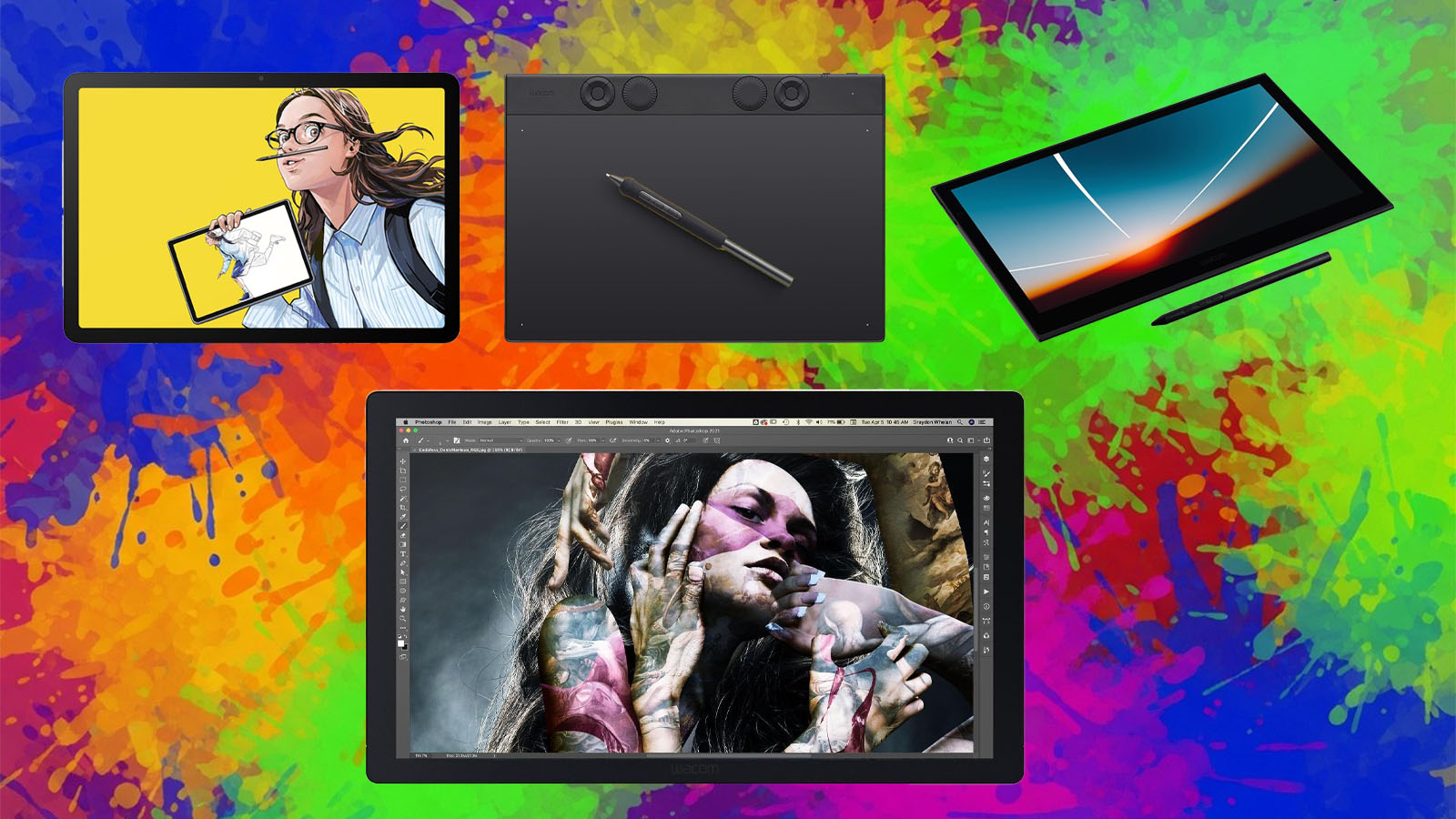Humanscale just spent 10 years making a $15,000 chair: here's why
The Diffrient Lounge chair is stunning, but who's going to sit on it? We speak to design lead Sergio Silva.

$15,000 is a lot to spend on a lounge chair – but Humanscale’s Diffrient Lounge is, well, different. Inspired by the work-from-home revolution jump-started by the global COVID pandemic, the Diffrient Lounge is designed to be a good-looking chair that allows the user to work comfortably in more relaxed settings. But it’s $15,000!
- See our list of the best office chairs for back pain
The reason for that eye-watering price tag is the complex engineered system that, like many Humanscale chairs, automatically adapts to the user – certainly making the chair a contender in our list of the best office chairs for back pain. Fancy a break from work? Lean back in its nest of luxurious materials, kick your feet up on the footrest, and catch up with The Kardashians. Need to make last-minute Photoshop adjustments? Sit up and the backrest follows you into a more upright position, swivel the built-in table across, and get to work. Job done, you can lean back into Kourtney, Kim, et al.
To find out more about this passion project chair, we sat down (very comfortably) with Sergio Silva, Humanscale’s Vice President of Design and Innovation. He told us about the philosophy behind its creation, the influence of late industrial designer Niels Diffrient, and that oh-so-high price point...
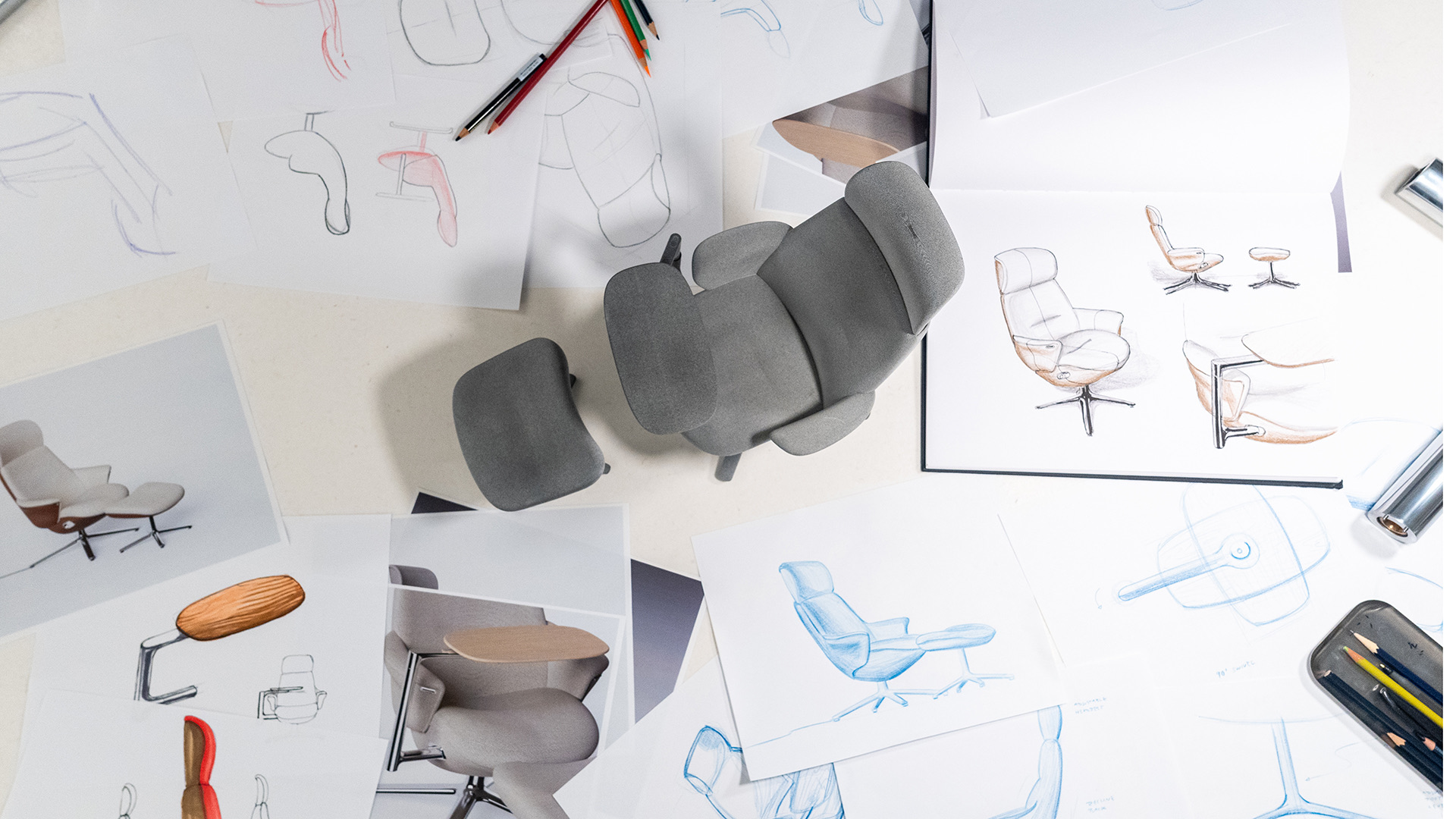
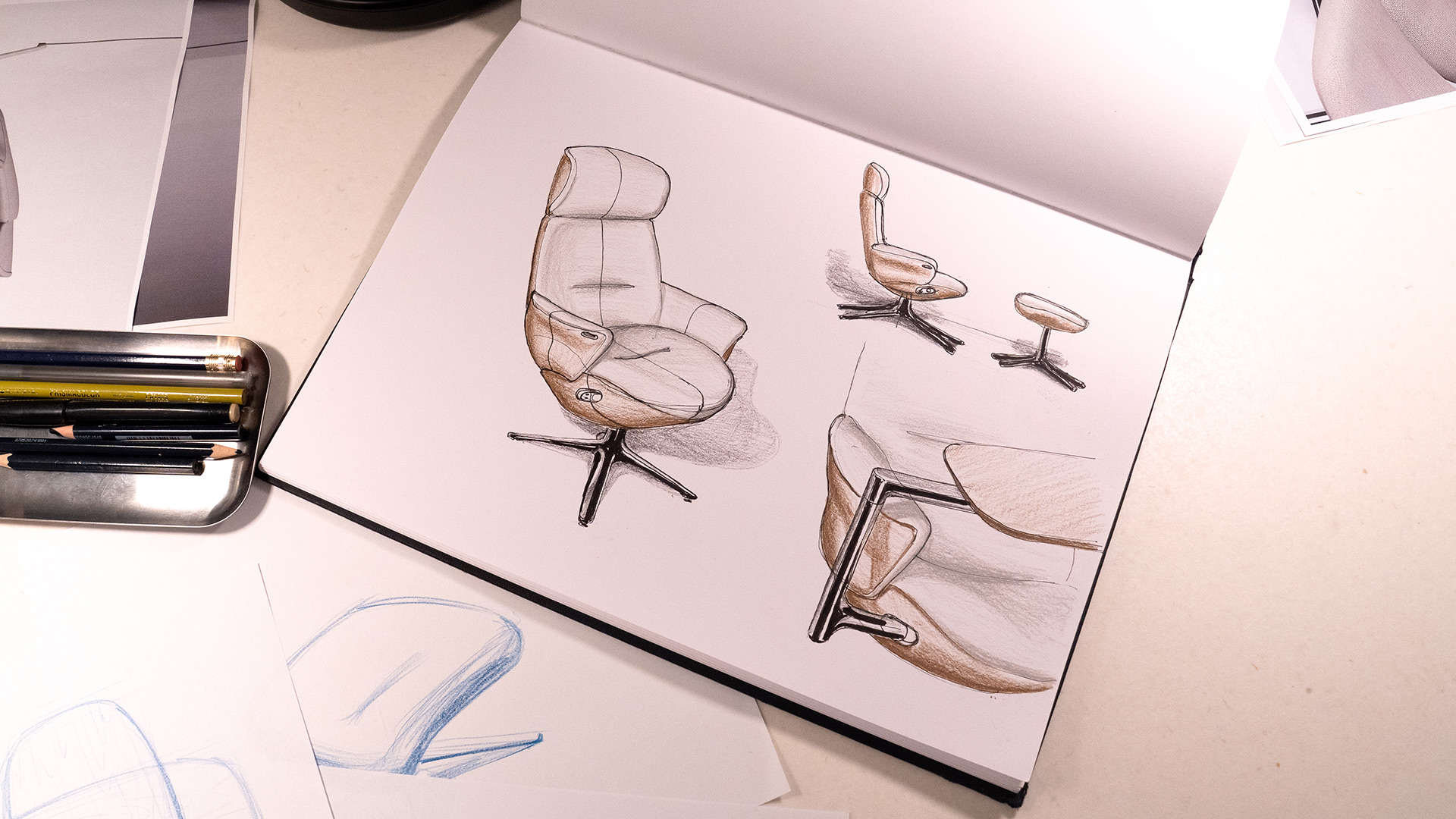
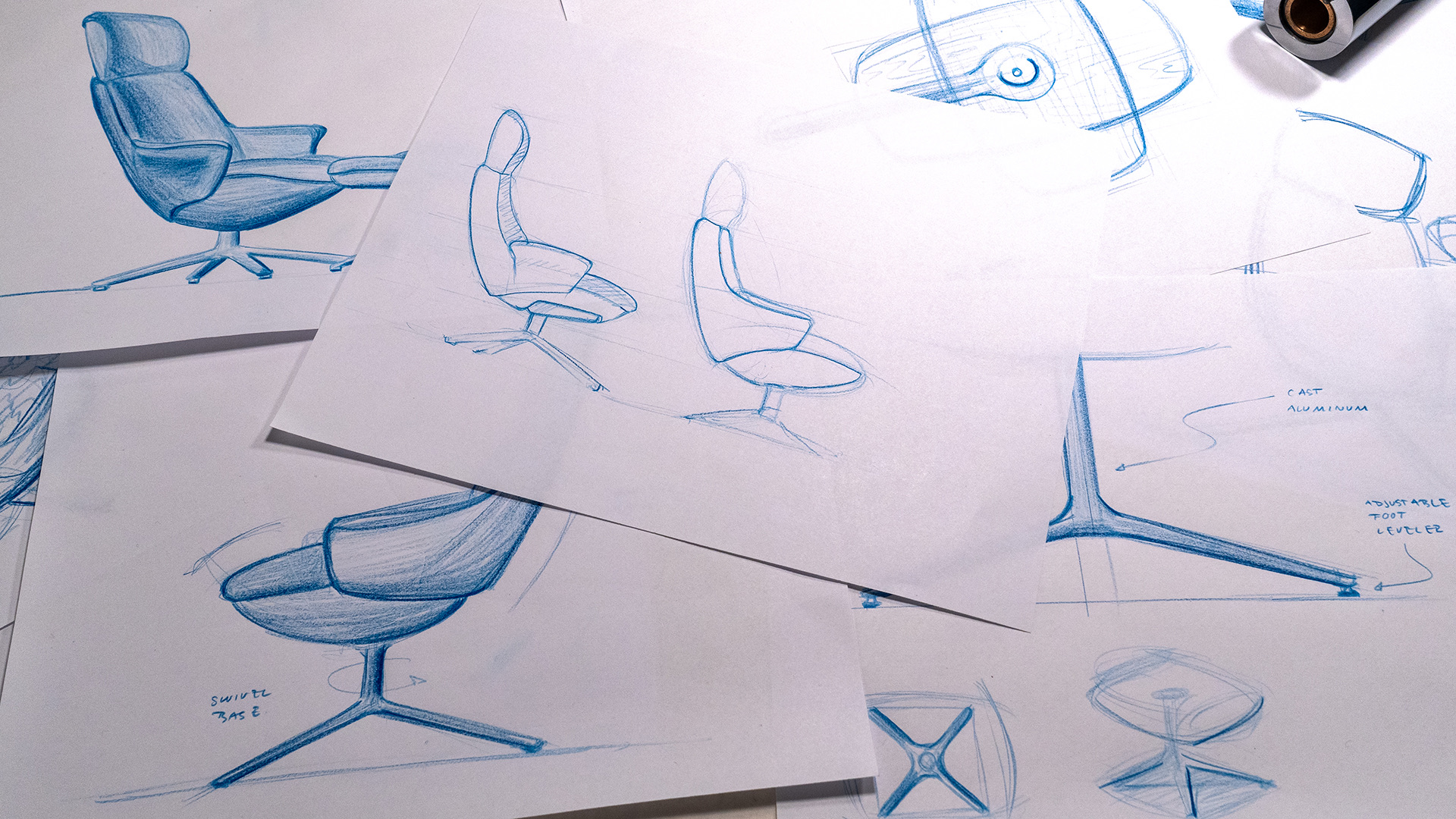

How did the Diffrient Lounge come about, and who's it aimed at?
It’s an ode to Niels Diffrient, who was the original designer. He left a huge legacy for Humanscale.
Initially it was focused on the office worker. But, as you know, there's been a global pandemic since. Work behaviours have changed in a big way, and we reframed our thinking to address the work from home reality. A lot of people are working from home and are doing so in a compromised situation, working from their sofa or their beds.
This adds more possibilities, more ways for you to combine beautiful furniture with some form of a work solution. But [the Lounge] doesn't look like office equipment. It looks like a beautiful lounge chair, first and foremost. We wanted to strike that balance between residential aesthetic and premium office product, as well as hospitality environments, VIP lounges, and wellness rooms.
So it's the first Humanscale work-from-home inspired release?
In seating, yes, I think so. And it's also technically our first lounge chair. We're focused on ergonomics, providing real solutions that support the way people work and that promote good behaviours, good habits. We didn't want to just add another lounge chair purely about materials or following trends.
It's really about providing a real ergonomic solution that's comfortable and supports different postures and the way that people nowadays like to transition between work and rest and relaxation, and tap into different creative modes. It's essentially to promote different modes of creativity by supporting you in those transitions.
At $15,000 how does it feel that most people won't get to enjoy this chair?
Well, this product is an exception to the rule for us. We wanted to aim high with the lounge, with a new product category for us, and show the world what can be achieved when there's no compromise. That said, it is part of our roadmap to come up with simpler mechanisms that are going to be at lower price points in order to create a wider breadth of product offerings, price ranges... but this chair is an idea that Niels had been tinkering with, and we wanted to honour him.
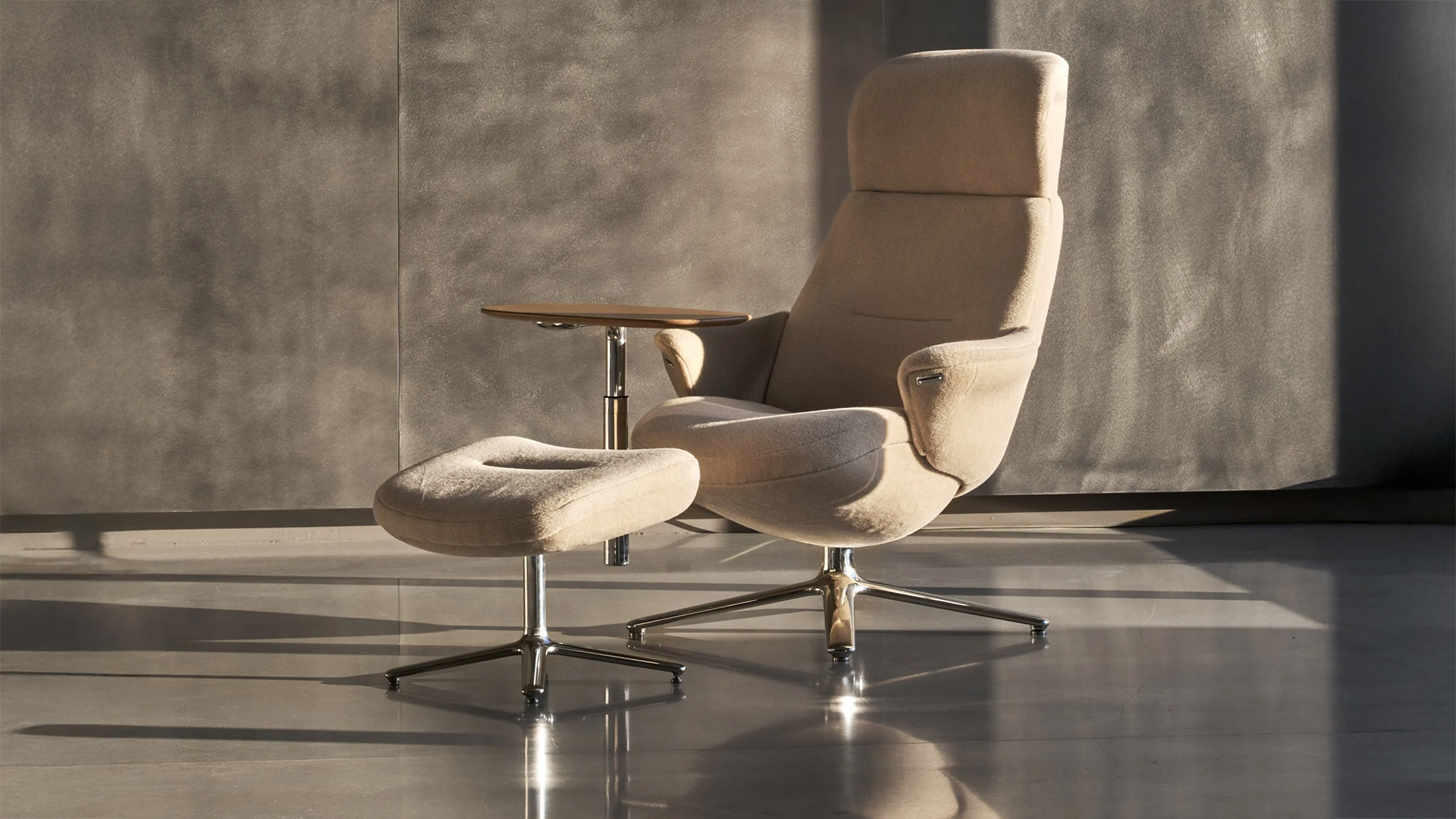
Does it interest you to create the most beautiful, functional, ergonomic budget chair possible?
Absolutely. We actually just recently introduced our World LM chair, which is essentially a simplified form version of the World task chair, designed by Niels. It has some cost reductions that allowed us to introduce it at a lower price point [around the $800 mark], and that is exactly the intention of making a Humanscale task chair available to a wider audience.
How many prototypes does a new chair go through? Take us through the Diffrient Lounge from concept to sale...
The Lounge really is the outlier here! I can easily say it took over 10 years of development. The arc of development has probably been 15-plus more, because it goes all the way back to an idea that Niels started tinkering with in the 1980s, with the Jefferson chair.
It takes between four and five years for a task chair that has a mechanism that's developed by us. Prototypes really come in two different buckets. In early stages, the mock-ups help with overall proportions of the human body, and then eventually they become working prototypes. The Lounge took anywhere between five and 10 rounds of prototypes.
A core principle of Humanscale is ‘function first, aesthetics follow’. Is that always the case? Are there projects where you allow the aesthetics to lead?
Believe me, my design team would love that! And in some ways, I think we go through stages of the process where we allow that to happen. But ultimately, if we allow it to be purely driven by aesthetics, without solving the functional problem first, you end up over-stylising something without there being an essence behind it.
Solving for function first really means that it challenges the designer with solving a real problem. Why does this product need to exist? And once you've done that, then the form typically follows from that in a way that serves the function naturally. We find that it always leads to a more timeless aesthetic as a result of that, because it’s more understated.
Many manufacturers create chairs to look highly engineered… and sometimes they look like a torture device…
I think that a lot of people confuse complexity with advanced engineering. We actually do the opposite here. The lounge chair is a perfect example that embodies what we strive to do here. One of Niels Diffrient’s famous quotes is "good design is as little design as possible". It's the heart of minimalism.
The Lounge has these beautiful, clean, modern lines on the exterior, but underneath that is a very complex, technical, engineered system. But the user is not confronted with that complexity. They simply experience a chair that moves effortlessly.
Is there healthy competition for you? Do you see companies like Herman Miller as competition?
I respect Herman Miller, Vitra, and Steelcase for all of their products. We think of ourselves as being in a slightly different line from them. I think they tend to focus more on breadth and options of materials and sizes, and we focus on depth and clarity and solving for a more specific work-related problem.
We consider ourselves experts in ergonomic solutions. We often describe ourselves as an ergonomics company that happens to make furniture.
Do you consult with ergonomic experts?
We have a consulting arm within Humanscale, and we consult with them while we're doing development work. They're the ones tapping into the latest research and studies, and they have the latest data on anthropometric measurements or the human body.
The caveat there is that there can be a lot of misinformation out there as well. There are ergonomists out there that preach the benefits of all of these manual controls that you'll find on the typical ergonomic chair, and we don't believe in that. We actually believe in the opposite, that you should reduce the complexity of a task chair, remove those knobs and locks and simply have a beautiful, simple mechanism that self adjusts. All of those complicated chairs, no one actually knows how to use them, they're not using them properly, and they're actually hurting themselves.
Can't afford the Diffrient Lounge? Have a look at some fantastic budget office chairs that won't break the bank....
Daily design news, reviews, how-tos and more, as picked by the editors.

With over 20 years of experience in journalism and content creation, Henry has covered everything from gaming and digital art to VFX, new tech and film. He loves to translate the complex into accessible, whether that with text or video. When he’s not thinking about what creatives need to do their jobs properly, he’s busy discovering new and creative ways to fall off his bicycle.
You must confirm your public display name before commenting
Please logout and then login again, you will then be prompted to enter your display name.
